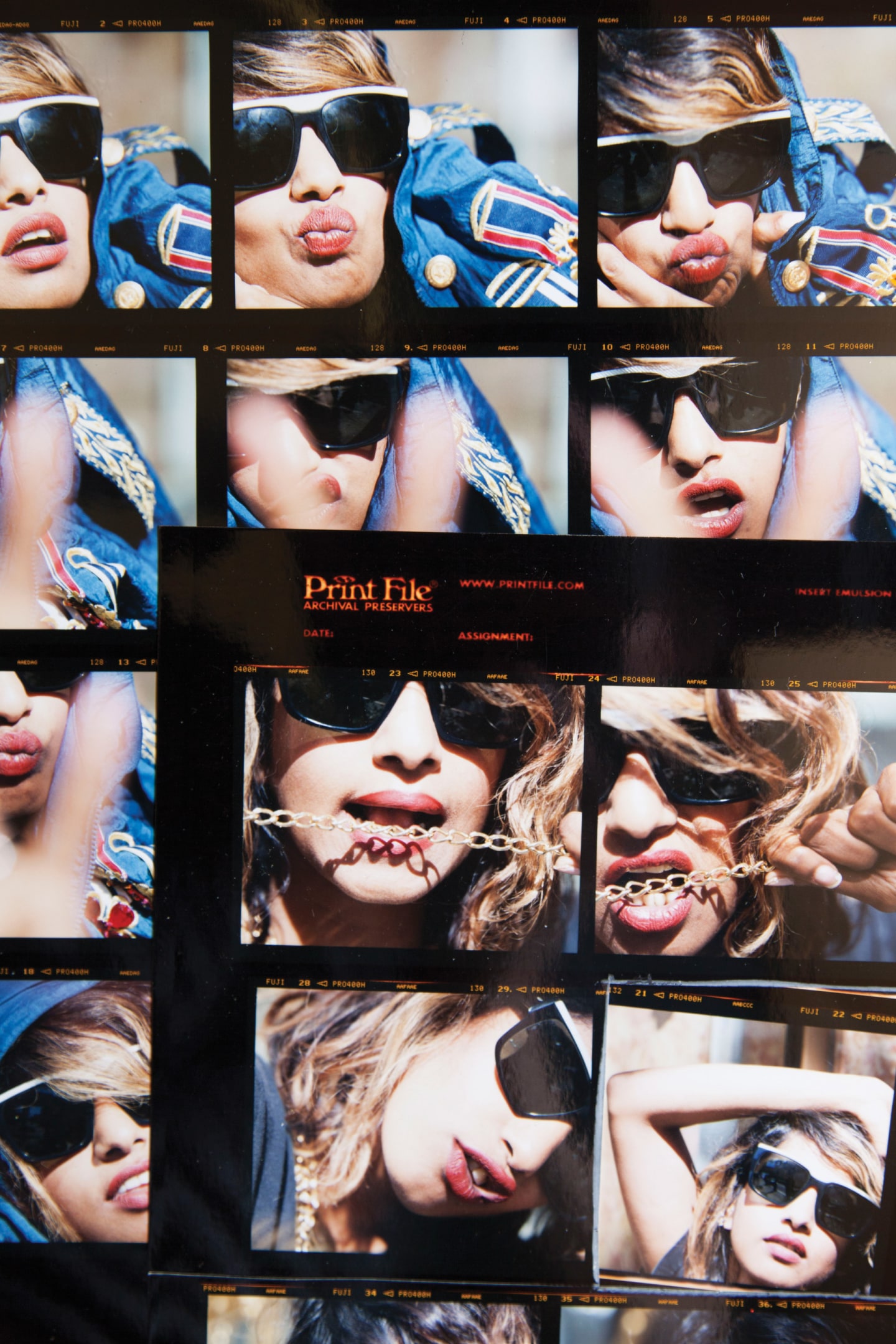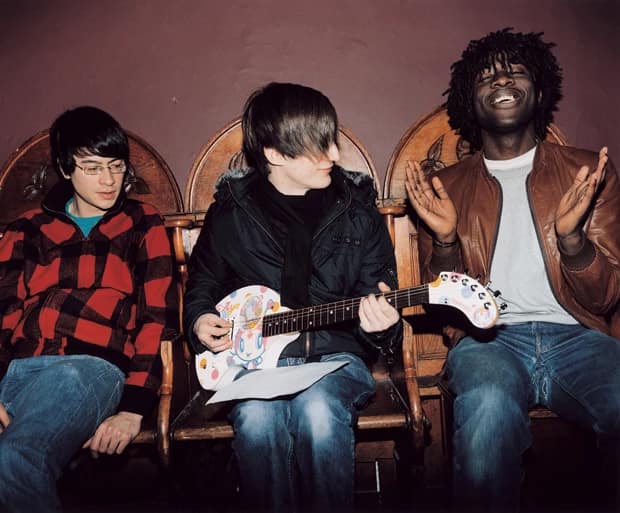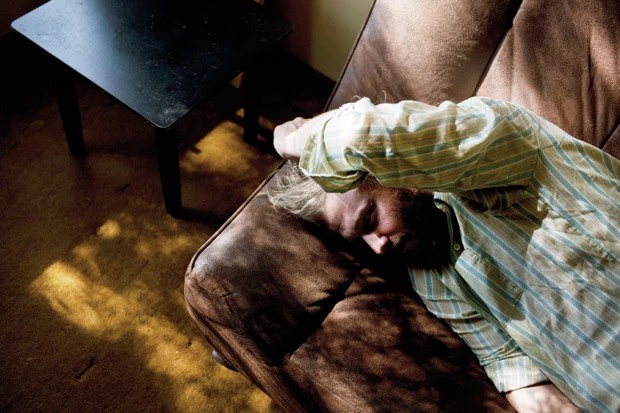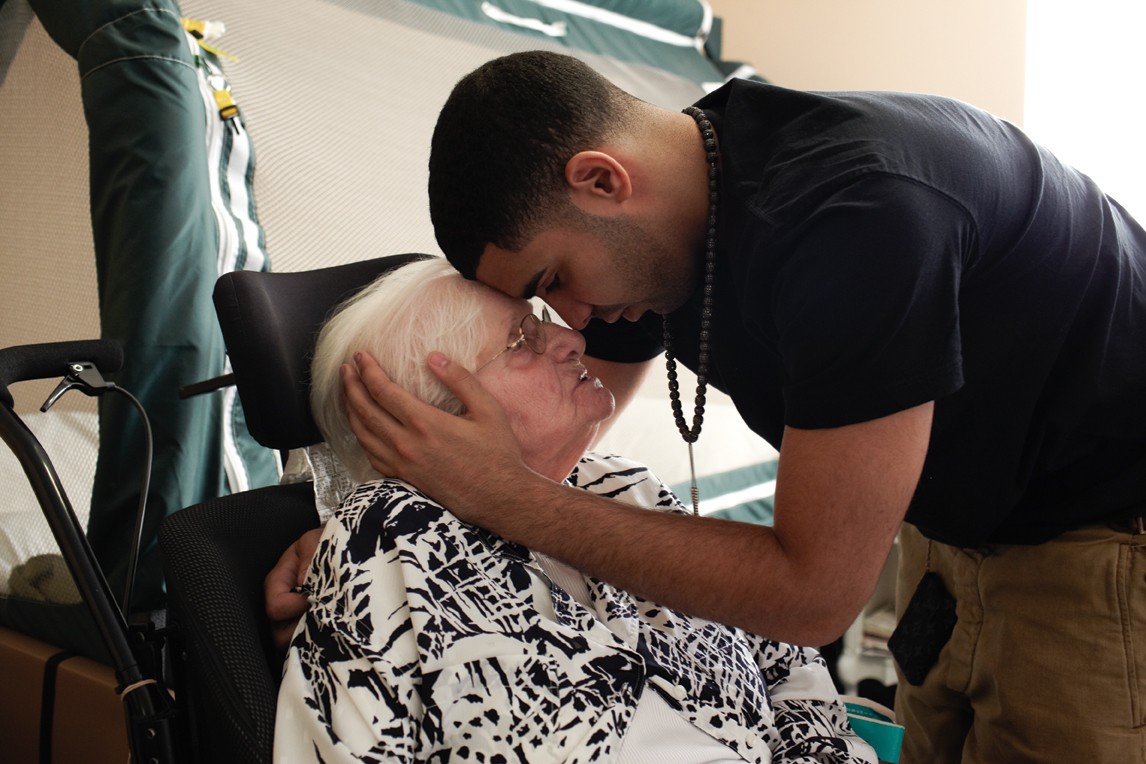The Ongoing Evolution Of FADER Photography
During the 2000s, former creative director Phil Bicker helped define the look and feel of The FADER. He explains how he did it then, and why things are changing again now.
 M.I.A.
Jason Nocito
M.I.A.
Jason Nocito
Trying to pick a single favorite FADER photograph is a real Sophie’s Choice. How to compare Krisanne Johnson’s luxe black-and-white images of young dancers in South Africa from issue 51 with Jonathan Mannion’s intimate moments with Drake and his ill grandmother? Or Jason Nocito’s enormous portraits of largely forgotten Glass Candy with the Gabriele Stabile’s enormous closeups of largely forgotten Charles Hamilton? Regardless of the relative fame of a subject, the ethos of a FADER photograph has been to document our subjects without aggressive glitz. We already think you’re great, so show us why.
Much of that approach can be traced back to former creative director Phil Bicker, a birdlike British man with a thing for baggy denim. Bicker, who worked at FADER from 2004 to 2010, shaped the photograph into something like documentary turned askew. While it may be difficult to draw an aesthetic line between many of the images published in 100 issues of FADER, it’s not so hard to draw an emotional one, one of intimacy between photographer and subject in a neutral space that seeks to show the truest version of who you are. If it looks a little beautiful and a little weird, well, all the better. I sat down with Bicker, now working at Instagram, to discuss how FADER’s picture sausage gets made.
I feel pretty strongly that you can look at a certain type of photo and say, “That's a FADER photo.” Do you think that exists? What makes it a FADER photo?
I think it does exist, which is kind of odd to think. I think that the aesthetic and the process came about through necessity as much as my own aesthetic choice. At most places you work, you don't get the chance to apply your aesthetics and your own ways of working. FADER enabled and allowed that. I literally interviewed every photographer who was working for that magazine at that time when I started. I had them all come in and try to explain to them what I was doing. I got a whole lot of shit from a lot of them. They said they didn't understand what I was saying. For the most part, there weren't budgets to go to some studio. [I wanted them] to make the most of that financial necessity by the access that most of [the artists] would give you, because a lot of them weren't huge stars, they were people who were breaking through. So what were they doing for the most part? They had all the time in the world, in Brooklyn, doing whatever they were doing. So I think the reality was, you could say to a photographer, “Can you go out and spend the day with this person?” As that built, it became something where photographers expected to be able to spend the time. Then I think the artists themselves, you could ask the most ridiculous things of people and for the most part they would say yes.
Like what?
“Cat Power, can Jason Nocito sleep at your apartment and hang out with you for three days?” "Yeah, sure!" I think people got themselves into some really crazy places. A lot of people like [Michael] Schmelling and Nocito, they knew the artists they were photographing, they had relationships with them, they could hang out with them, and it was very kind of informal. Then there were lots of people who were less a part of that world—the people we ended up bringing on board like Peter Van Agtmael and Justin Maxon and Gabriele Stabile. They didn't have that inside information, that inside connection, but they took the photography to another level in terms of how they captured moments. The aesthetics are very much atmospheric, very dark, very caught moments. It wasn't like, “Go get your haircut.” At that point, most rappers were like, “Go get your haircut for the photos because it'll look like you're doing something.” So the idea was that you'd almost be doing nothing. And then when people did do something—like Cat Power in the rain in a swimming costume—they did crazy stuff but they actually did it. She probably would have done that if she wasn't having her photo taken. So that was the idea to tap into people's lives a little bit and take that aesthetic of a photo documentary thing. But it wasn't authentic in as much as—we did move bottles on tables and stuff. It wasn't like we didn't orchestrate anything. I remember talking to Leonie Purchas, now Leonie Hampton, who said “Phil taught me how to move the Coke bottle that was in the way, because I wouldn't ever do that because I was a documentary photographer.” I would always say, “No no, make the best photo you can.”
 Cat Power
Jason Nocito
Cat Power
Jason Nocito
This sounds like you’re talking about patience more than anything.
The process is fundamental. I think when FADER started it was much more authentic than the period directly before I was there. It became a little more hipster. It was a little bit like, "We're hipster, we know what it is." It's a clique.
That might have been the aesthetic of the moment, as well.
When it first started, FADER was much more kind of authentic and much more kind of direct, and then it became hipster. And I think people respected it subsequently when I was there for its "authenticity," in inverted commas. I think that's the interesting thing.
Authenticity always seemed like a meaningless term everyone is always striving for. We just went to someone's house, which seems like the most boring version of authenticity you can get. How do you make a good picture out of nothing?
There's a couple ways of doing that. Place was important. We either did a moment if we could capture it, and if you couldn't capture it, there was no situation to take a photograph or it felt too contrived, we'd go in really tight and do these double page closeup headshots. You could take a closeup picture of someone when there was nothing going on—that was our default. That was one of the directives to people: if you can’t get something, do that.
 Bloc Party
Liz Johnson Artur
Bloc Party
Liz Johnson Artur
 Diplo and Maluca
Gabriele Stabile
Diplo and Maluca
Gabriele Stabile
What would qualify as not being able to get something?
A good example was the White Stripes. They wanted us to follow them around and do this stuff as a photo shoot and it was like, that's not gonna work. It's gonna look like we're out on a photoshoot with you guys.
It would look inauthentic.
What we did was we found a little room and sent Alistar McClellan there, and we just did closeup headshots. That's all we did. It felt more authentic. The other thing is we very rarely shot with flash. We used natural light. It felt more like it was happening rather than you'd made it happen.
The other thing is fashion with [FADER style editor at large] Mobolaji Dawodu: you couldn't tell it was fashion after a time. He's an amazing, amazing stylist because he makes people look like they’re wearing their own clothes. Which is great. he was always pushing to make it more fashion and I'd always be pushing to make it more photographic. We'd send them to crazy places, we'd send them all around the world. I don’t know what they got up to out there, but what they'd come back with was really interesting.
A lot of what you are talking about comes back to trust. Did it always work?
No, it didn't always work. A lot of people would come back and they didn't do what they were asked. I never minded the people who didn't do what they were asked—well, I did mind it, but I didn't mind if they did more than what they were asked. Sometimes it was better. But they would be shocked when I was really direct with them and say, "That's a pile of shit, you know."
 Bon Iver
Jason Nocito
Bon Iver
Jason Nocito
You have so much rope to make something interesting, but if it happens that you don't come back with something unique, whatever it may be, you've failed FADER.
It was a very collaborative process. The great thing about the collaborative process was it would stretch everybody. I do feel like I directed everything meticulously. I would give people piles and piles and piles of reference stuff, literally hundreds of photos, but there were so many references, you could basically do anything. Someone like Nocito would interpret things so that you could never tell where the reference came from, which I thought was brilliant. I could give you the references for the pictures, like Bon Iver's cover, and you would never know that was the reference to the picture but I could tell. And I think that's amazing.
FADER rarely shows musicians doing their actual occupation.
The one person who was the exception to the rule was Liz Jonson-Artur. She was so authentic in the way she shot. If you're going to shoot someone playing or doing, she's the woman to do it. There's no pretense about the way she shoots. Absolutely zero pretense. She's so direct. Josh Wildman as well. Those two guys: black and white. Bang! Smack! Wallop! Done. That was the thing people always forget anywhere I've worked, people always forget the anomalies. They think it's a holistic and homogenous viewpoint and it isn't. You put Wildman in there and he's got nothing to do with the other people. You put LJA in there, she's got nothing to do with the other photographers. Schmelling's not a complete fit in that group either. There are subtle differences, but there are the real standout differences of those particular guys. Dosunmu's not really fitting into that either. I think you can connect them through each other and they help support each other in terms of visual aesthetics of the magazine.
Let's talk about design. Almost all the design was in service of the image. What did you want to do as creative director separate from as the photo director?
There were some experimental things in terms of design, like light leaks and all that color flair all that stuff early on where I was using custom type. There was a pencil-like typeface that we used for the first issue I worked on. The way things worked, you're right, photos came first, design came second. But then above and beyond that, the idea of commissioning Cy Scott, illustrators like Mario Hugo, Deanne Cheuck, and also Nonformat was so that the whole thing could meld through. Photography was the center, but that wasn't enough. You had to have photo, type, infographics. The idea was that there would be many, many layers. If you were interested in typography, you'd find something there, if you were interested in illustration you'd find something, and if you were interested in photography, you'd no doubt find something there. The idea was to bring all those things altogether. The most successful issues were where all of those elements were working with each other on different levels.
 Drake with his grandmother
Jonathan Mannion
Drake with his grandmother
Jonathan Mannion
What was it like making FADER?
It's like being in the zone. It's a very intuitive, instinctual thing. I can only imagine, because I'm not a great sports player—but if you’re a great musician and you're on that day, and you’re playing, and you're in the moment, and it's really coming, you're channelling something, amd that's what it felt like. It was hard, because I make it hard, that's just how it works. It was hard on certain levels, but there were a lot of great people working there. You have to remember there was some really big personalities there that you had to deal with. It's almost like you get the dream team in place but they're all nuts at the same time. All completely nuts.
Do you feel like your imprimatur is still there at FADER now?
I'm quite impressed that now it’s evolved photographically to a certain place. Maybe that's not evident to certain people, but it's definitely become a little more, what do you say, stylized, a little cleaner, a little more graphic in terms of the way it is.
I think the magazine evolved, again out of necessity. We had less access as we worked with bigger artists but we still tried to bring a similar aesthetic.
I like the fact that it moved on. That kind of stylized shooting is probably more relevant now. That cleaner way of looking at stuff is more relevant. It feels right that it went that way.
How do you see the vibe cultivated on paper at FADER translating to a digital world, to a screen?
I think the last 30 or 40-plus years would have us going from what I would describe as "public"—the idea that everyone is being fed this idea of what it is you're supposed to be interested in—to now where the private is public, where Instagram and other social media channels bring your own personal connections and your own personal interests to a forum, where you get your news through social media, and you get your news through your friends’ interests. I think FADER has a huge role in that because that’s where it comes from, it comes from this personal passion. FADER's been appreciating people's taste for a long time. When you take all those people we've touched upon through the generations of FADER, everyone was an individual. There was not one kind of corporate player there in terms of what they brought to the party. Everyone brought themselves to the party. "I'm passionate about this. you're passionate about photography. You're passionate about this type of music." I think the FADER really does imbue all that stuff which is where we're at now. It was good times. Really, really good times.